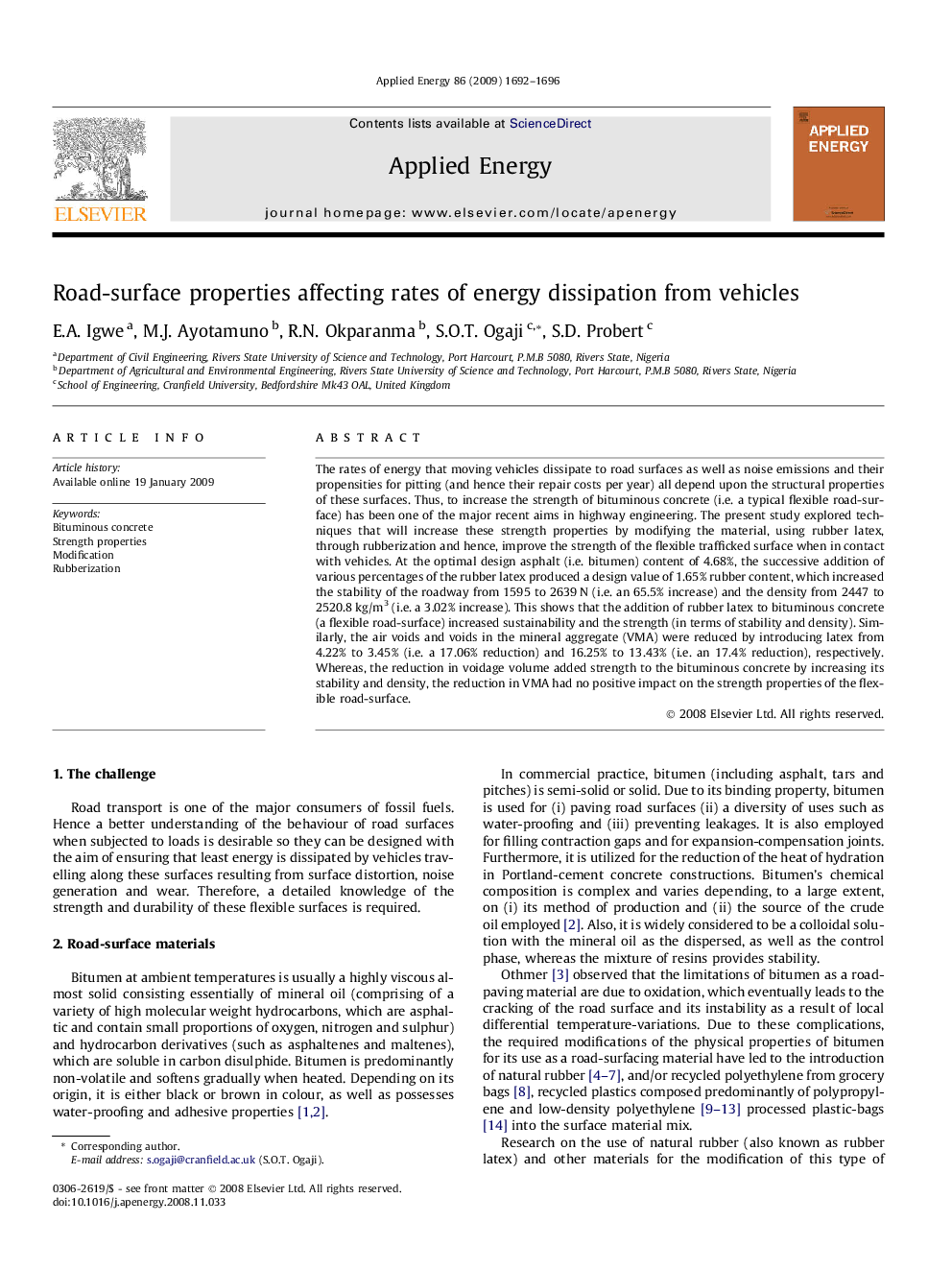| Article ID | Journal | Published Year | Pages | File Type |
|---|---|---|---|---|
| 244948 | Applied Energy | 2009 | 5 Pages |
The rates of energy that moving vehicles dissipate to road surfaces as well as noise emissions and their propensities for pitting (and hence their repair costs per year) all depend upon the structural properties of these surfaces. Thus, to increase the strength of bituminous concrete (i.e. a typical flexible road-surface) has been one of the major recent aims in highway engineering. The present study explored techniques that will increase these strength properties by modifying the material, using rubber latex, through rubberization and hence, improve the strength of the flexible trafficked surface when in contact with vehicles. At the optimal design asphalt (i.e. bitumen) content of 4.68%, the successive addition of various percentages of the rubber latex produced a design value of 1.65% rubber content, which increased the stability of the roadway from 1595 to 2639 N (i.e. an 65.5% increase) and the density from 2447 to 2520.8 kg/m3 (i.e. a 3.02% increase). This shows that the addition of rubber latex to bituminous concrete (a flexible road-surface) increased sustainability and the strength (in terms of stability and density). Similarly, the air voids and voids in the mineral aggregate (VMA) were reduced by introducing latex from 4.22% to 3.45% (i.e. a 17.06% reduction) and 16.25% to 13.43% (i.e. an 17.4% reduction), respectively. Whereas, the reduction in voidage volume added strength to the bituminous concrete by increasing its stability and density, the reduction in VMA had no positive impact on the strength properties of the flexible road-surface.
